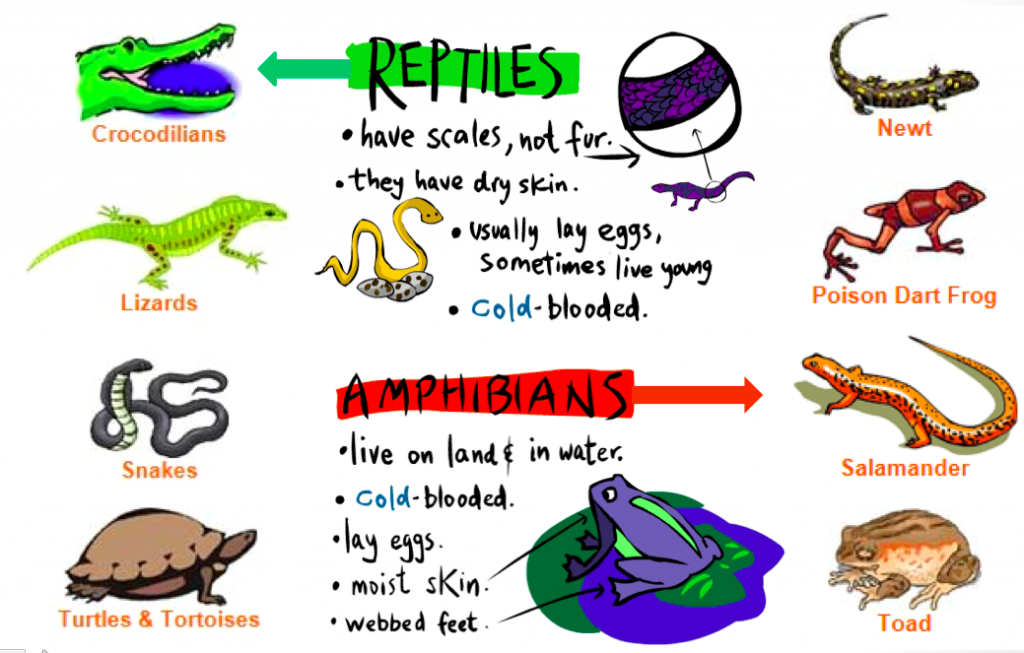
Review padlets (pass: bio)
Biology 2-1 review question padlet
Biology 1-1 review question padlet
- Reptiles were the first animals adapted to life entirely on land.
- Reptiles evolved from amphibians ~ 320 million years ago and displaced amphibians in many environments.
- Reptiles are ectotherms (“cold-blooded”)
Major Evolutionary Advancement – Amniotic Egg
- Developed from internal fertilization and provides the embryo with atmospheric oxygen, food, and water.
- Egg covered in a mineralized shell – reptiles have leathery eggs
- Removes nitrogenous wastes and protects the embryo from drying out.
- This marks the start of the amniotes (animals with amniotic eggs)
- Amniotes include : Class Reptilia, Class Aves, and Class Mammalia.
The amniotic egg is different because they have four extra membranes:
a.Amnion– thin membrane enclosing the fluid in which the embryo floats/prevents drying out.
b.Allantois– stores wastes produced by the embryo.
c.Yolk Sac– Surrounds the yolk (nutrients for embryo)
d.Chorion– Outermost membrane of the egg – protects embryo and allows gas exchange
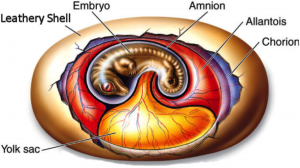
General Anatomy
- Have claws to protect and help them obtain food
- 90 degree leg position Provides greater body support compared to amphibians.
Integument: Tough, dry scaly skin that offers protection against desiccation (drying out) and physical injury.
- Skin can also have chromatophores for colouration.
- All reptiles shed their skin, however snakes shed the entirety of their skin in one session. This replaces old worn out skin and removes parasites.

Physiology
- Ectothermy – “Cold blooded”
- Reptiles are ectotherms, meaning they rely on environmental (or outside) heat sources
- Since they do not produce much internal sources of heat/regulation, ectotherms are able to use much less energy and have lower metabolic.
- The term “cold-blooded” is technically not correct since blood temperature changes with environmental temp.
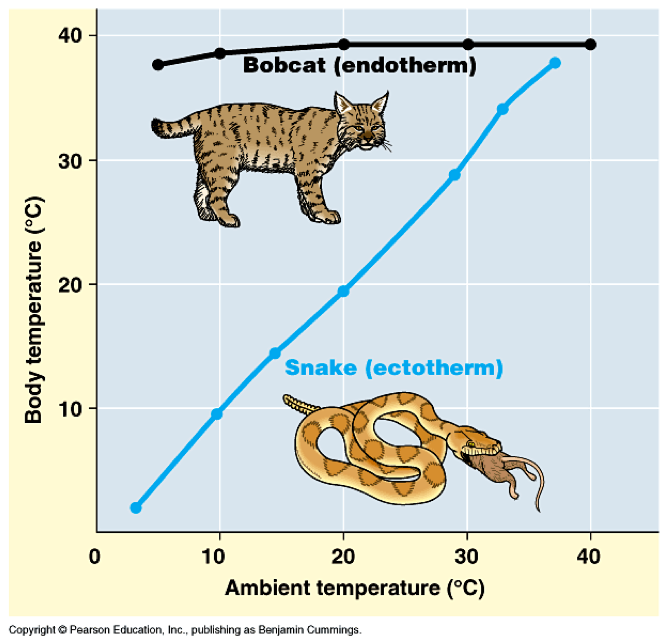
- But, What about fish and amphibians?
- Fish and amphibians are all ectothermic as well!
- Question: Reptiles and all previous vertebrate classes are ectothermic – can you make a prediction as what major evolutionary advancement will occur in terms of thermoregulation?
Physiology – Senses
Jacobson’s Organ
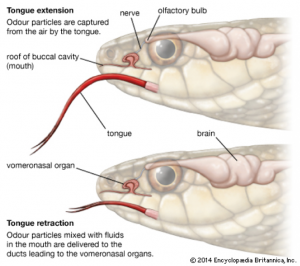
- The olfactory areas in the nose are not well developed in reptiles.
- Using their tongues, many reptiles, amphibians, and mammals can can detect chemicals (smell/taste) in the air via the Jacobson’s organ.
Heat-sensitive organs (or pits)
- In some snakes
- Detect the heat from prey, and nerves transmit this info to the same area in the brain that receives optic nerve impulses (sees a “heat image” of prey – just like an infrared camera!)
Physiology – Digestive System
- Digestive tract is similar to amphibians, however is longer, with a larger J shaped s
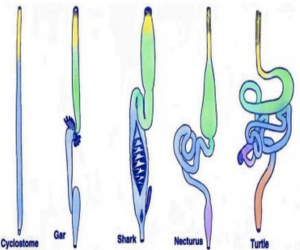
Figure 6: Comparing vertebrate digestive systems (first five classes) tomach (similar to higher vertebrates such as mammals)
- It includes the mouth and its salivary glands, the esophagus, the stomach, and the intestine and ends in a cloaca.
- One pair of salivary glands evolved to become venom glands in many reptiles. (yes, snake venom is modified saliva!)
Fun fact: Evolution of Snake Venom
- In snakes, venom has evolved to kill or subdue prey and due to its effectiveness, snakes diversified relatively rapidly.
- Interestingly, the venom system has also subsequently atrophied, or has been completely lost in many species after its evolution.
- For example, many American Rat Snakes lost their venom following the evolution of constriction as a means of prey capture. (however they still possess remnants of the system)
- BC has its own venomous rattlesnake – The Northern Pacific Rattlesnake (Crotalus oreganus oreganus)

Physiology – Reproduction
- Oviparous with internal fertilization (lays amniotic eggs)
- Most male reptiles have two sex organs called hemipenes. They are housed internally in males just at the base of the tail, and are everted when needed.
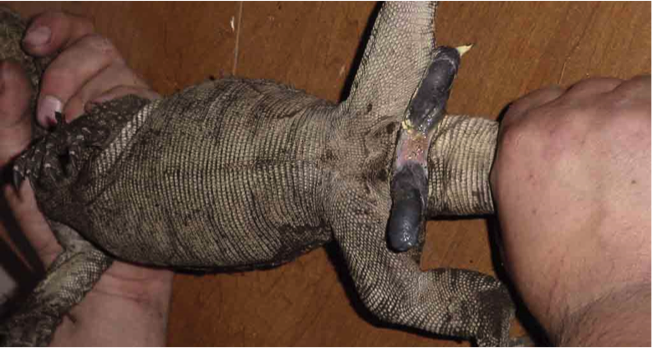
- In many snakes, the hemipenes possesses spines or hooks, in order to anchor the male within the female.
- Unlike many other reptiles, alligators/crocodiles use a penis that is always erect and “pops” out of their bodies to mate
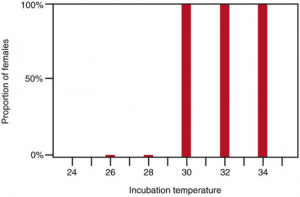
Figure 9: A graph plotting proportion of female turtles born vs. incubation temperature - In some reptiles, nest temperature determines sex of the hatchlings. This is called temperature-dependent sex determination.For example, In turtles, low temperatures during incubation produce males and high temperatures produce females.
Parthenogenesis – reproduction
- Parthenogenesis = reproduction from an ovum without fertilization
- The only vertebrates that show true parthenogenesis are the squamates, with about 50 lizard species and one snake being obligate parthenotes.
- These are unisexual species, all individuals being females that reproduce asexually without the intervention of any male.
- Ex. Tropical Night Lizards
Physiology – Circulatory system
-

Figure 10: Comparing vertebrate hearts Most reptiles have a three-chambered heart and double loop blood circulation (similar to amphibians)
- However, reptiles have an incomplete septum, or wall dividing the ventricle into two.
- More efficient than amphibians, but still not the most complex!
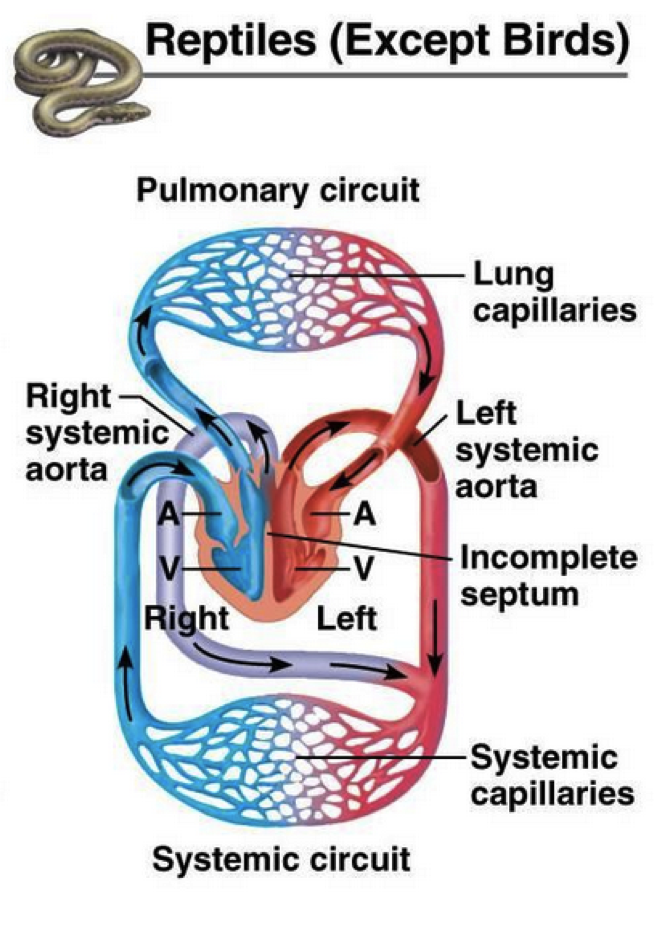
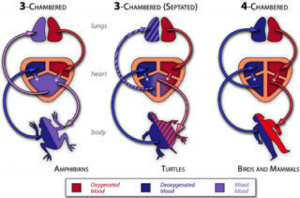
Crocodiles – a big difference!
Order Crocodilia (Alligators and crocodiles) have developed four chambered hearts and are closely related to birds – What heart structure would you expect in Class Aves?
Physiology – Respiration
- Reptiles are more active than amphibians, so they need more oxygen.
- Reptiles cannot skin breathe; their dry scaly skin is “watertight” to avoid water loss.
- The lungs of reptiles contain a larger surface area
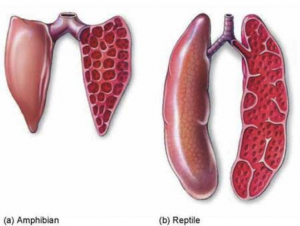
Groups of Reptiles
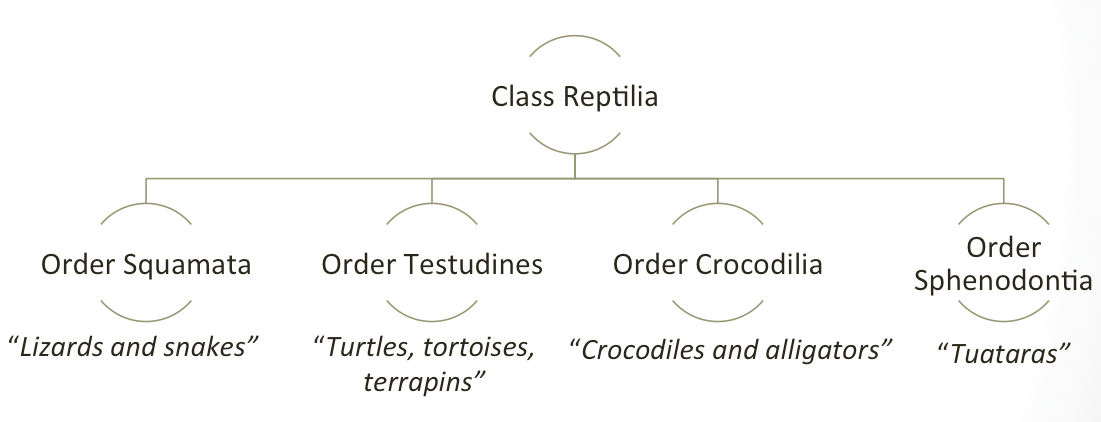
Order Testudines (“Turtles, tortoises, terrapins”)
In North America:
Turtles…
- Are usually water-dwelling and have streamlined, disk-shaped shells and webbed feet or flippers to rapidly move in water.
- They swim, but they also climb out onto banks, logs, or rocks to bask in the sun.

Tortoises…
- Are land-dwelling and tend to have dome-shaped shell to retract their head & limbs.
- They have thick sturdy legs and feet for moving on land and eats low-growing shrubs, grasses, and even cactus.
- Tortoises that live in hot, dry habitats use their strong forelimbs to dig burrows.

Terrapins…
- Spend their time both on land and in water, and live along rivers, ponds, and lakes. Terrapins are often found in brackish, swampy areas.
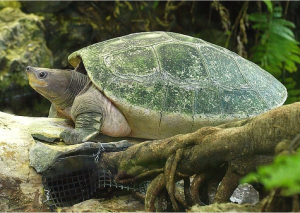
Order Squamata (“Lizards and Snakes”)
- Snakes and lizards have a kinetic skull, which means it is modified to have movable joints, specialized for eating large prey.
- In snakes, the two halves of the lower jaw (mandibles) are joined only by muscles and skin, allowing them to spread widely apart.
- Since a snake must keep breathing during the slow process of swallowing, its tracheal opening (glottis) is thrust forward between the two mandibles.
- Swallowing may take several hours but saliva begins digestion during swallowing.
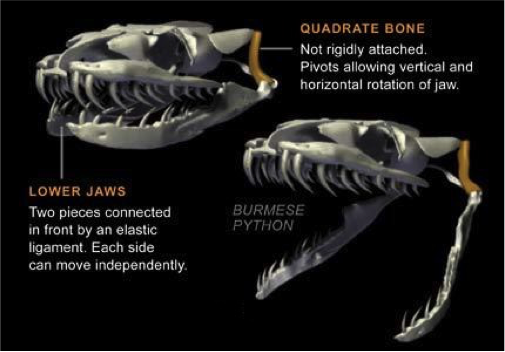
- Snakes have no external ears or tympanic membrane, but are quite sensitive to vibrations carried in the ground – their jaw carries the vibrations into the ear to the cochlear bone
Order Crocodilia (“Crocodiles and alligators”
- Crocodilians are large, aquatic reptiles; of the living reptiles, they are the most closely related to dinosaurs.
- Live in tropical and subtropical regions around world and can usually be distinguished based on head morphology:
Crocodiles – Long triangle-shaped heads; when mouth is closed you can see the upper and lower teeth showing; teeth vary in size.
Alligators – Wide flat heads with round noses; When mouth is closed only the upper teeth are showing; Teeth vary in size.
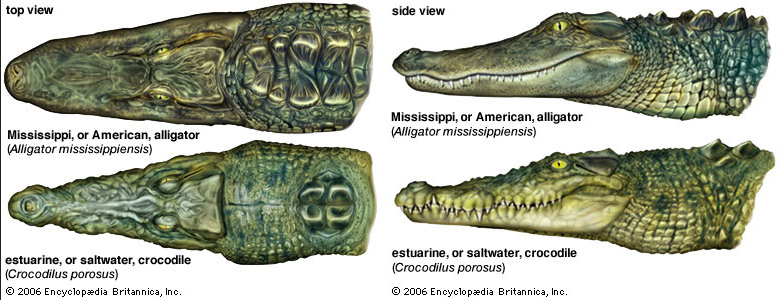
- All are aggressive carnivores
Order Sphenodontia (“Tuataras”)
- Tuataras are nocturnal, lizard-like reptiles that live in burrows often shared with petrels. They usually hide in burrows during the day and feed on insects, worms, and other small animals at night
- Only 2 living species; both inhabit only a few small islands of New Zealand.
- They were once widespread throughout the two main islands of New Zealand. Humans introduced non-native animals, including rats, cats, dogs, and goats, which prey upon tuataras and their eggs.
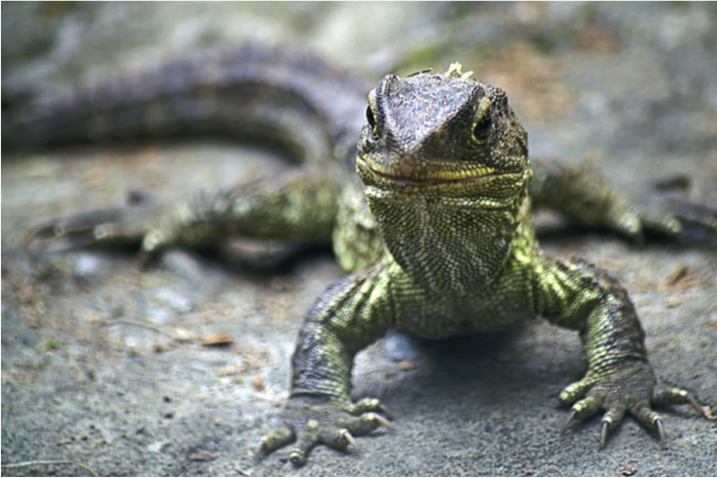
Figure 18: Tuatara
Comments by shaun pletsch